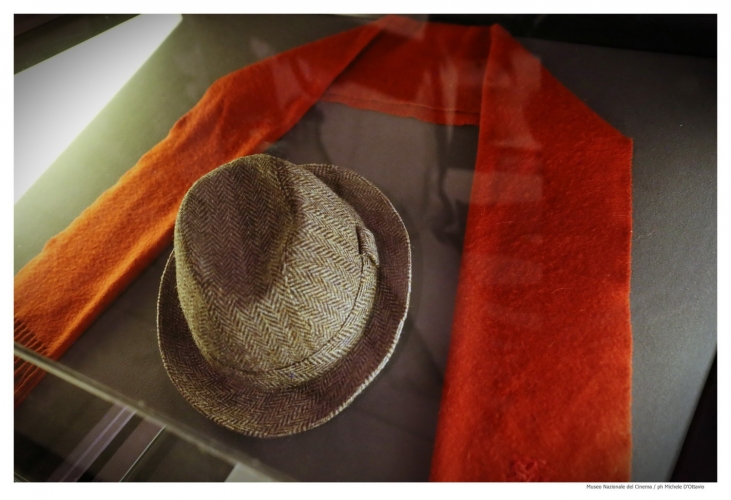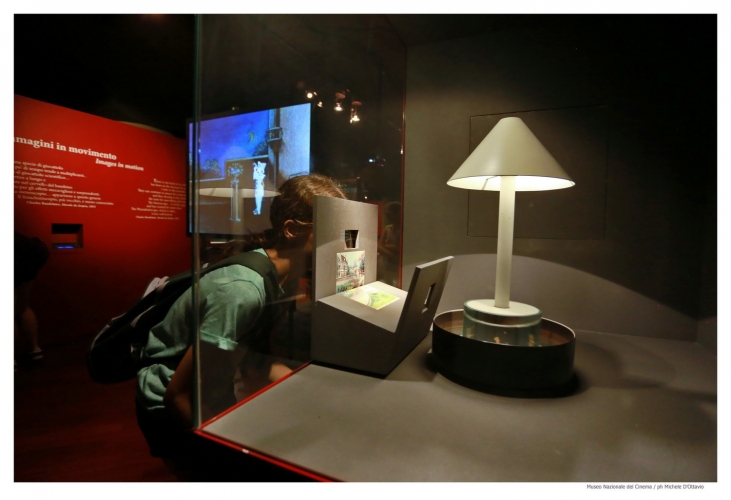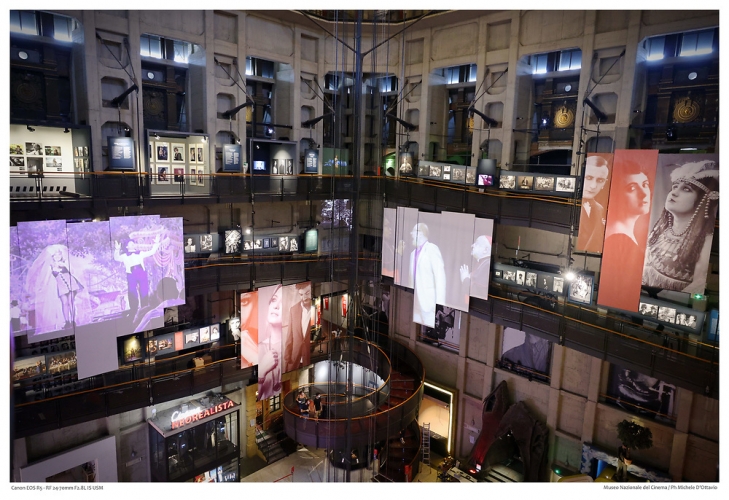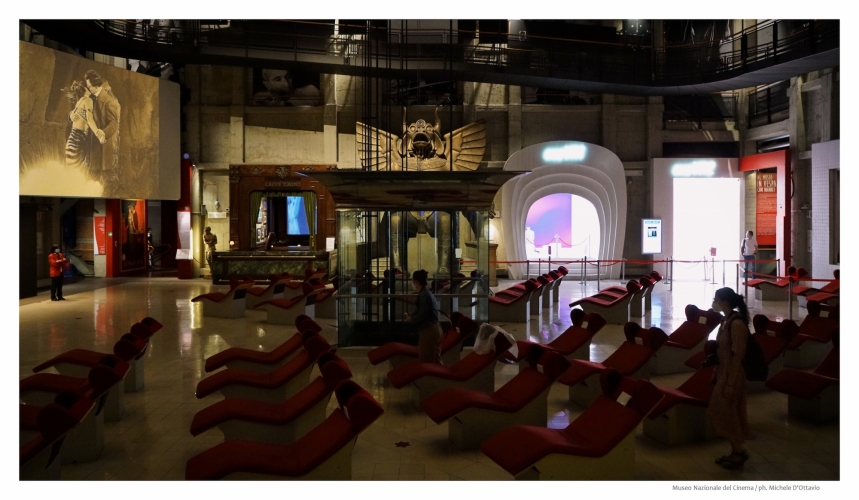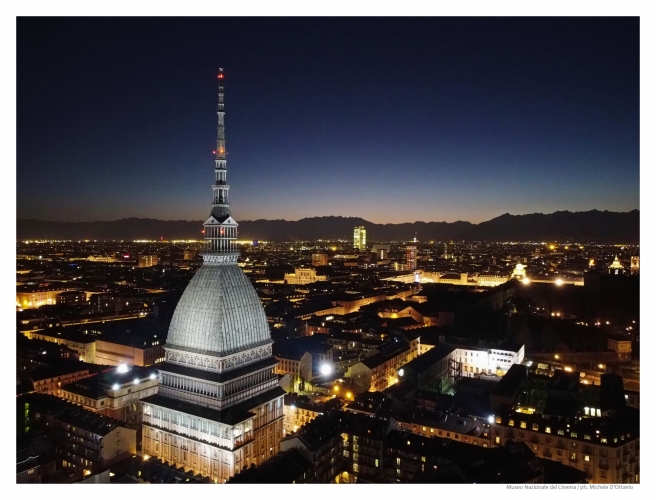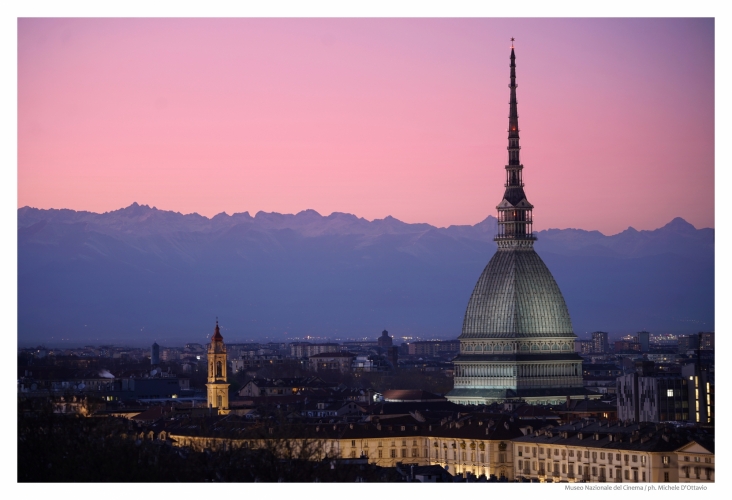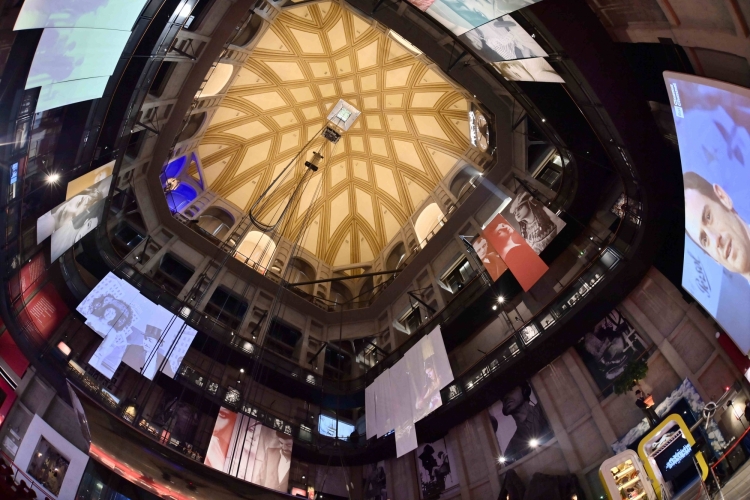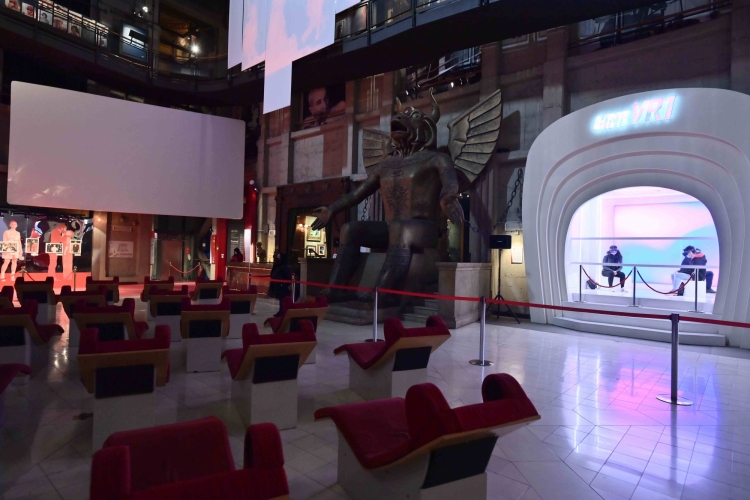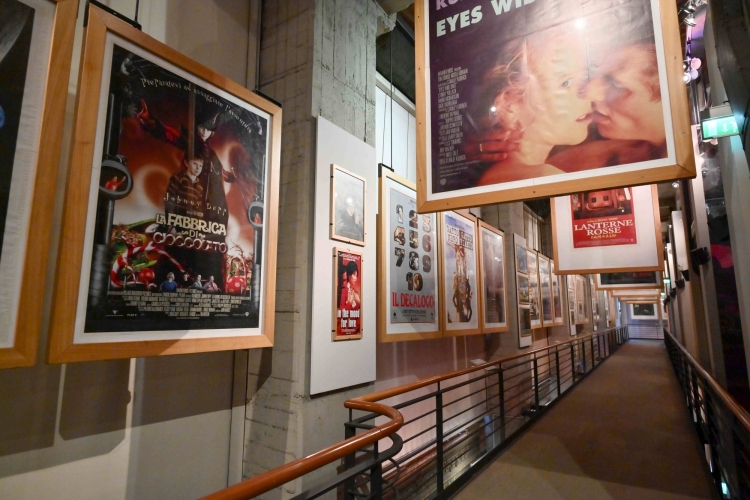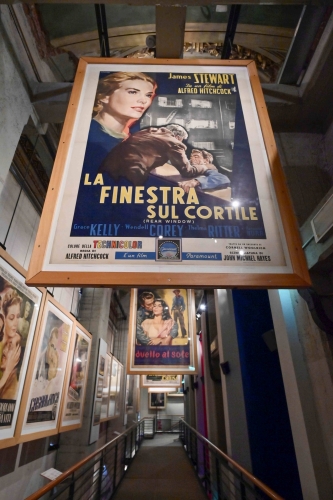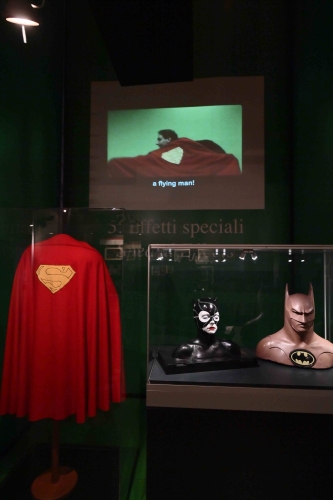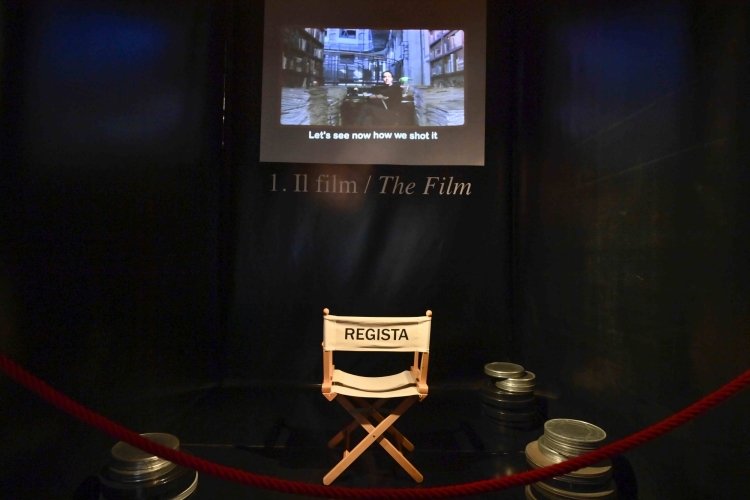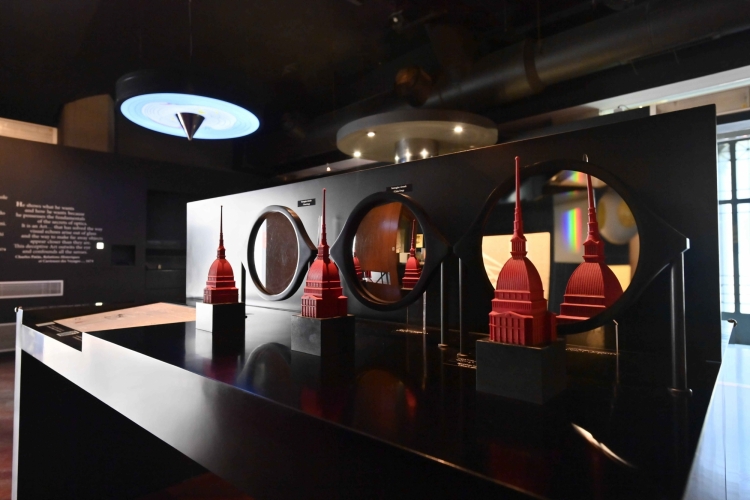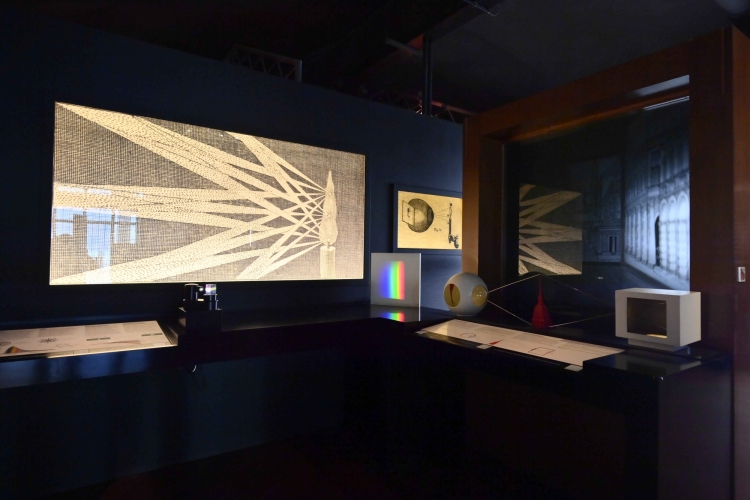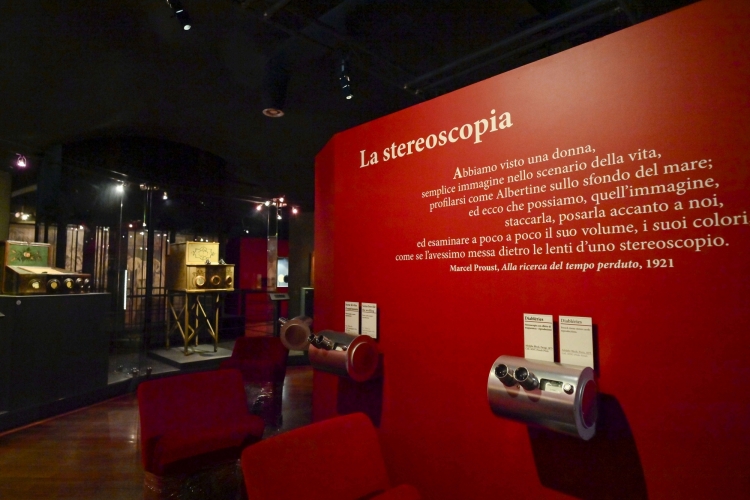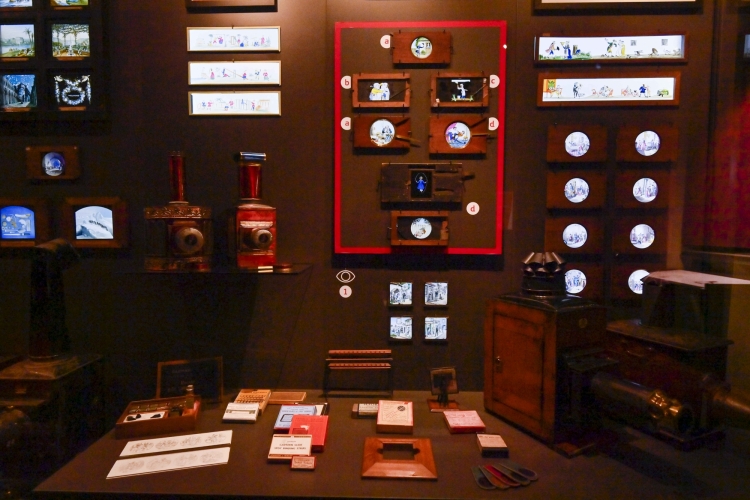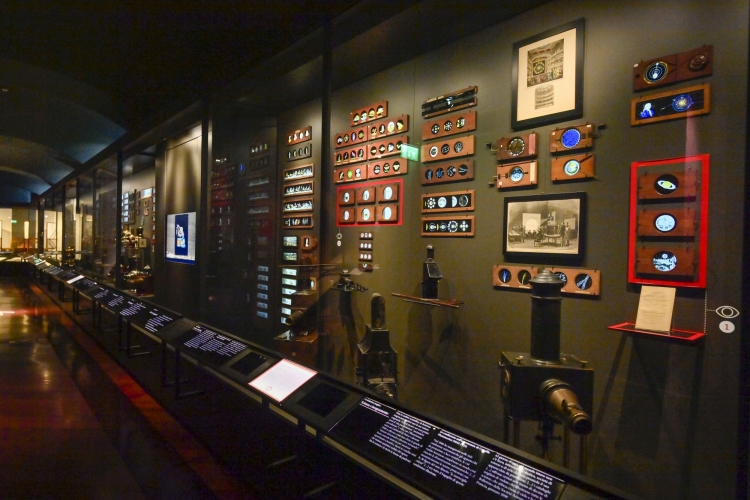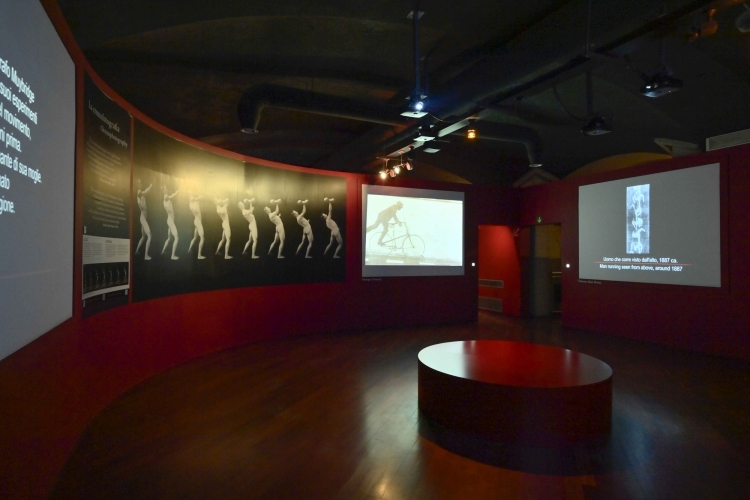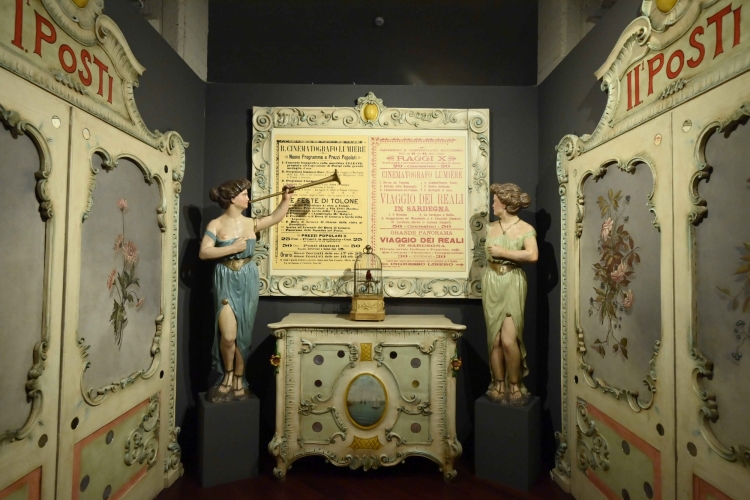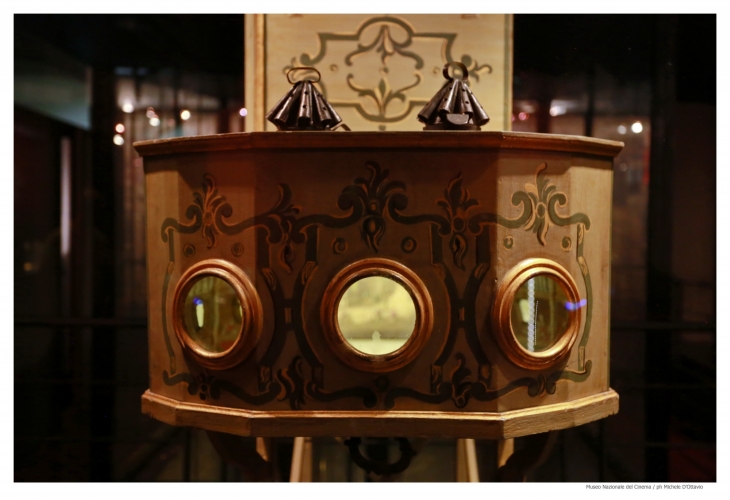 Download
Download Museum Press Release
Unique in Italy and one of the most important in the world, the NATIONAL MUSEUM OF CINEMA is housed inside the Mole Antonelliana, symbol of the city of Turin. Inaugurated in July 2000, it has become one of the most visited museums in Italy, gaining wide international acclaim; a remarkable achievement for a very special museum that aims to fascinate visitors by involving them in the enchanting world of the Seventh Art.
What makes the National Museum of Cinema truly unique is the rich heritage of its collections and the peculiarities of its layout, developed in an upward spiral and articulated on several exhibition levels that illustrate the history of cinema by alternating posters, objects, film clips and spectacular and evocative sets. In addition, free Wi-Fi, interactivity and QR codes provide access to multimedia content in a multisensory journey into the world of cinema and a more participatory and accessible visit.
In designing the museum layout, François Confino not only had to take into account the characteristics of the building that houses it, but, following Antonelli's crescendo, he juxtaposed different levels of interpretation, combining the needs of a rigorous scientific layout with the demands of a spectacular display that aims to reproduce and play with the mechanisms of fascination that are at the basis of cinematic representation.
PRESS INFO NATIONAL MUSEUM OF CINEMA
Head of Press Office: Veronica Geraci
T. +39 011 8138509 | M. +39 335 1341195 | geraci@museocinema.it


